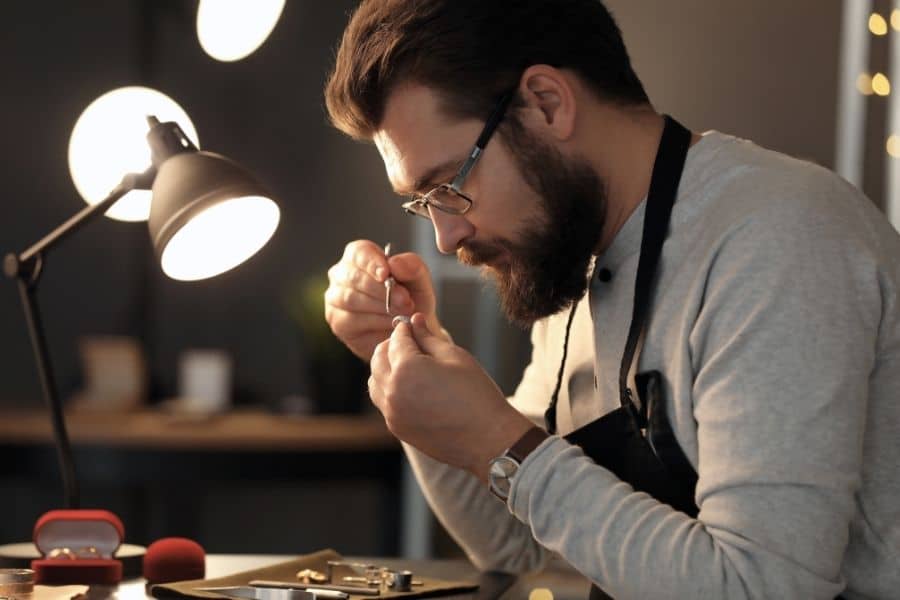
The Art of Jewelry Making: Essentia
1. The Allure of Handmade Jewelry
Handmade jewelry has long been cherished for its uniqueness and artistic value. Each handcrafted piece reflects the vision and skill of the artisan, making it a truly personal accessory.
By creating jewelry from scratch, artisans can explore innovative designs and materials, resulting in distinctive, one-of-a-kind pieces. Handmade jewelry often holds sentimental value, serving as a treasured keepsake or a meaningful gift.
2. Must-Have Jewelry Making Products
To craft high-quality jewelry, artisans require essential supplies such as beads, wire, metal sheets, and gemstones. These materials serve as the foundation for creating intricate designs and stylish accessories.
Other important tools include adhesives, polishing cloths, and workbenches, which aid in achieving professional-quality results. Investing in superior jewelry making products ensures both durability and precision in every crafted piece.
3. Choosing the Best Jewelry Pliers Set
A jewelry pliers set is indispensable for handling delicate components and intricate designs. Different pliers serve distinct functions, such as bending wire, gripping small objects, or creating loops.
Round-nose pliers, flat-nose pliers, and crimping pliers are fundamental for shaping and securing elements. A high-quality set enhances efficiency, ensuring seamless construction and polished results.
4. Wire Wrapping: A Fundamental Technique
Wire wrapping is a versatile and elegant method used to create decorative loops, spirals, and cages for stones. This technique is particularly useful for creating intricate designs without the need for soldering.
Mastering wire wrapping enables artisans to produce sophisticated pendants, rings, and earrings. With the right pliers and patience, artisans can perfect this craft and achieve stunning results.
5. The Charm of Beaded Jewelry
Beaded jewelry offers endless design possibilities, from simple bracelets to elaborate necklaces. Beads come in various materials, including glass, gemstones, and metal, adding depth and texture to jewelry.
Using beading boards and crimping tools ensures precision in arranging and securing beads. By mastering different stringing techniques, artisans can create visually striking, well-balanced designs.
6. Engraving and Stamping: Adding a Personal Touch
Personalization is a growing trend in jewelry making, with engraving and stamping techniques allowing for unique inscriptions. Whether it’s a name, date, or meaningful symbol, engraving adds sentimental value.
With the use of engraving pens and metal stamping kits, artisans can craft meaningful and customized pieces. These techniques enhance jewelry by incorporating artistic imprints and messages.
7. Metal Stamping: Creating Textured Designs
Metal stamping is an excellent way to add intricate details and artistic texture to jewelry. Properly executed stamping transforms plain metal into personalized works of art.
Using high-quality stamps and a strong striking technique ensures clear impressions. Experimenting with different patterns and layered stamps elevates the overall appeal of the final piece.
8. Resin Jewelry: A Modern Artistic Approach
Resin jewelry offers limitless creative opportunities by allowing designers to encapsulate flowers, pigments, and glitter. This technique results in vibrant, glossy, and durable designs.
Using high-quality resin molds and precise curing techniques ensures a professional finish. Resin crafting allows artisans to push creative boundaries and design stunning, eye-catching pieces.
9. Jewelry Findings: The Unsung Heroes
Findings, such as clasps, jump rings, and connectors, are crucial for jewelry assembly. Without sturdy findings, even the most beautiful designs may lack durability.
Properly securing findings with pliers ensures a well-constructed piece that remains intact over time. Choosing high-quality metals for findings enhances longevity and ensures a polished, professional appearance.
10. Finishing Techniques for a Polished Look
Finishing techniques, such as buffing, tumbling, and polishing, are essential for enhancing the final look of jewelry. These methods remove imperfections and create a smooth, glossy surface.
Using polishing compounds, buffing wheels, and protective coatings ensures that jewelry retains its brilliance. A well-finished piece not only looks professional but also stands up to everyday wear.
11. Organizing Jewelry Making Tools for Efficiency
A well-organized workspace boosts creativity and productivity. Storing tools and materials in designated compartments prevents clutter and ensures an efficient crafting process.
Investing in storage solutions, such as labeled boxes and wall-mounted racks, keeps essential tools within easy reach. A systematic approach to organization enhances workflow and minimizes crafting errors.
12. Conclusion: Mastering the Art of Jewelry Making
Jewelry making is a perfect blend of artistry, skill, and precision. With the right tools and techniques, artisans can transform simple materials into stunning wearable art.
By continuously refining their craftsmanship and investing in top-quality jewelry-making products, designers can create exquisite pieces that stand out. Whether as a hobby or a business, jewelry making remains a fulfilling and rewarding craft.






